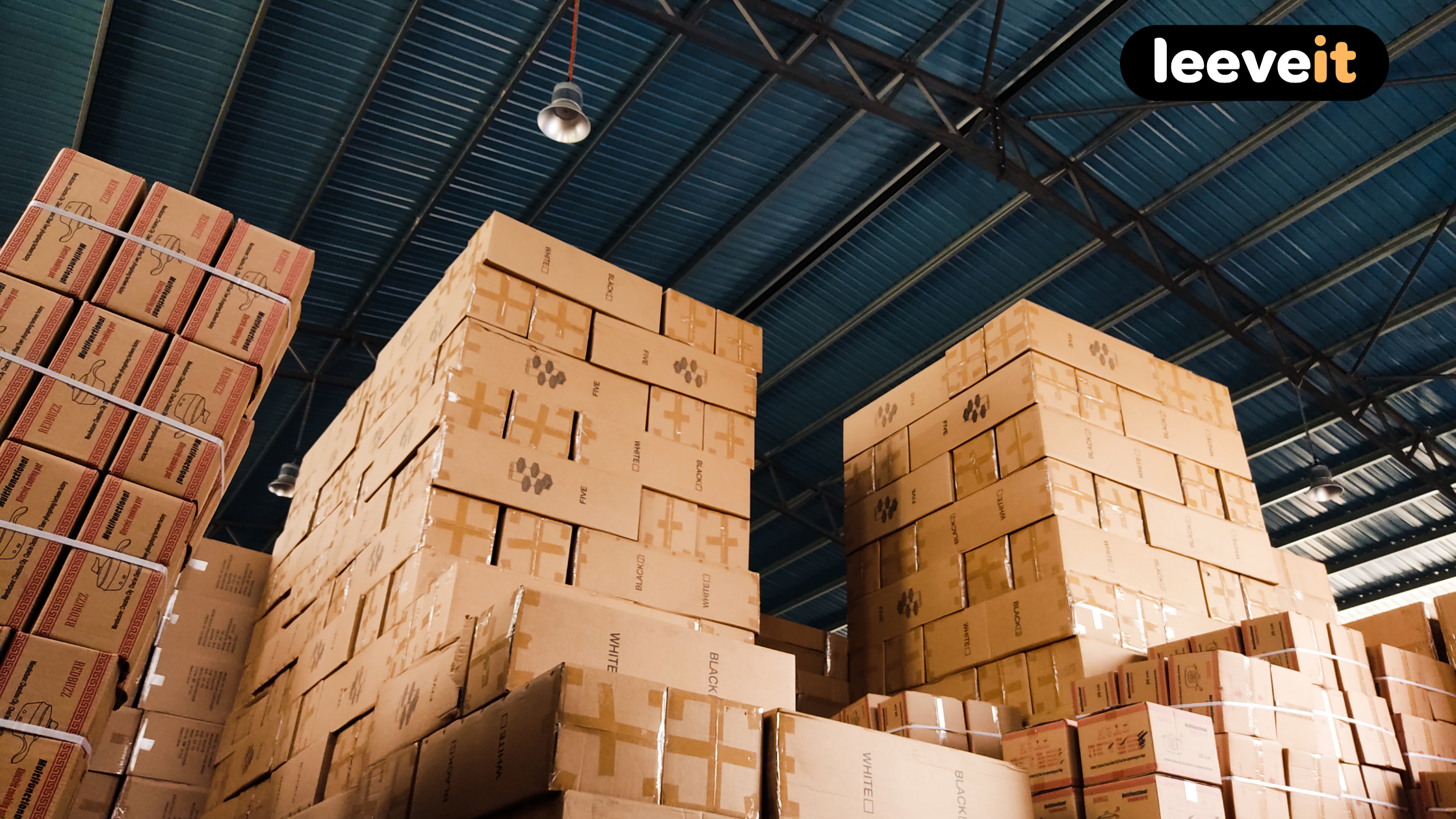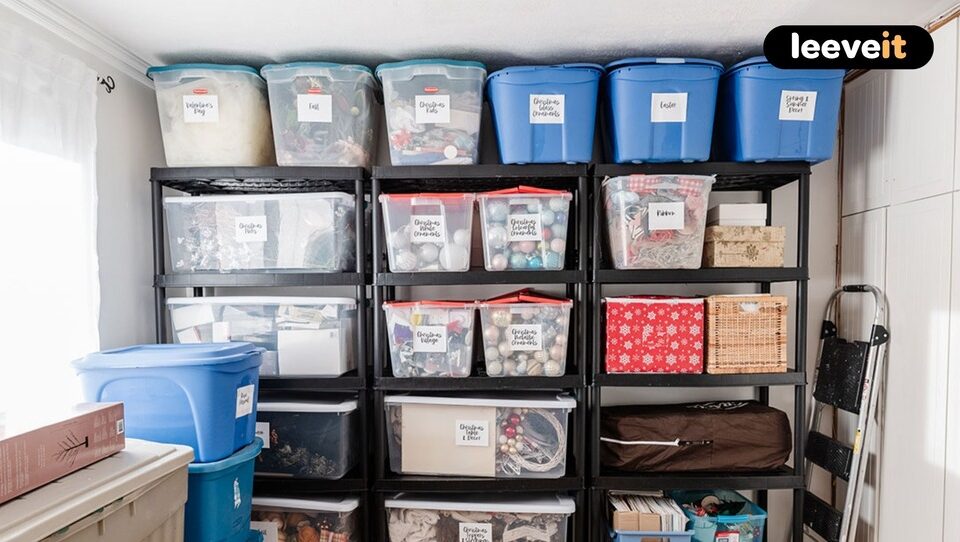Storage Unit Rental Tips For First-Time Renters
April 28, 2023
15 Creative Ways To Use A Storage Space Creatively
May 18, 2023Without any doubt, warehouse storage can help you improve your workflow, control products, minimize risk, and a lot more. However, to avail of these benefits, it is vital to implement the right warehouse storage solutions. Thus, we can say that well-optimized storage solutions have become the need of the hour. So, on this account, leeveit experts have come up with this blog. Here, we will share efficient solutions that will let you manage your inventory, fulfill your orders, use your space better, and increase operational productivity without hassle.
So, without dawdling, let’s dive deep into the blog.
But First, What Is Warehousing?
Warehouses provide a secure location for companies to keep their goods. The warehouse workers arrange and maintain tabs on the following:
- Where everything is situated.
- At the time, it arrived.
- The total quantity of items in stock.
Although every business needs warehouse storage, some businesses can’t operate adeptly without warehouse solutions—
–Retailers use warehouses to stock products before they are delivered to a store for sale.
–Online store owners keep their things in warehouses to deliver that directly to customers upon receiving an order.
–Sometimes, small firms opt for garages as makeshift storage. However, as companies expand, they will inevitably require more room for storage and a more organized system to oversee it.
With the growing demand for warehouses, finding a warehouse on rent may seem difficult. This is where leeveit platform will pique your interest. We have a platform where people with vacant warehouses list their space. Therefore, you only need to explore our website to find the most suitable storage. Not only do we help our users to find the right space, but we also let them comprehend the best way to use our storage. So, in the following paragraphs, we will familiarize you with the finest warehouse storage solutions. Keep reading!
Most Successful Warehouse Storage Solutions
Companies that follow best practices in warehousing work towards two main objectives:
- providing value-added services, such as product customization
- And maximizing the speed with which products move through the warehouse into the hands of consumers as quickly as possible.
In order to achieve these goals, companies follow the following leading practices.
Traditional Shelving
Shelving is one of the oldest warehouse storage solutions and the first thing that comes to mind when most people think of warehouse storage.
Static shelves are built to remain in one location, usually where they were initially erected. Fixed aisles were a consequence of the nature of static shelving. On the other hand, mobile shelves can be relocated easily. They are typically mounted on a carriage with wheels. Using mobile shelving allows for more efficient storage by reducing or eliminating the need for fixed aisles. Thus, it is important to recognize that each shelving type has a role within an operation.
Quick Tip:
Build your racks higher
Sometimes the simplest solution is the best, which is often the case when it comes to increasing the height of rack shelving. Many warehouses can gain significant storage capacity by adding a second shelving story to their racks.
It goes without saying that there are precautions to take into account when using this advice. Never exceed the maximum height (or maximum weight) specified by the rack equipment’s manufacturer. Warehouse security cannot be compromised in exchange for additional capacity.
Strategic Warehousing with an Emphasis on Customers and Value
Companies need to include a high degree of adaptability in their warehouse operations to meet the ever-changing demands of their consumers. To remain competitive in today’s market, “product customization” has shifted into the spotlight and become an essential part of today’s warehouses.
Further, companies who follow best practices see the warehousing phase as their “best chance” to win over clients. That’s why to stay ahead of the game; they’ve come up with a number of strategies— implementing value-added services like compliance labeling or floor-ready packaging into warehouse operations and delaying final assembly until the warehouse phase are both successful tactics.
As a result of the newfound importance placed on value-added services, several businesses have recast their warehouse storage as revenue generators rather than expense sinks.
Quick Tip:
Remove old stock from the shelves.
Dead inventory, often known as damaged, obsolete, or severely slow-moving stock, is present in nearly every warehouse. Clearing away this stock can make a significant amount of storage available for holding active inventory. Conduct an audit of your stock to determine which items are the least profitable and whether you can get rid of them.
Create a Flexible Warehouse Design
In recent years, many best-in-class businesses have been eager to investigate novel layouts that add adaptability to warehouse processes. It is essential for warehouses to be adaptable to meet their customers’ ever-evolving needs for new and improved items. Furthermore, leading companies take a “team-build” approach to the design process, involving all departments involved from the get-go to build flexibility into warehouse design. This includes engineering, information systems, finance, marketing, customer service, purchasing, manufacturing, and warehouse operations. Besides, they adjust the block pattern to ensure goods move efficiently around the warehouse.
Apart from this, there are other essential tips that you can follow to make your warehouse storage a bosom buddy with your business.
Mezzanine Floors
Mezzanine floors are an inexpensive way to make the most of the available height in a warehouse. These floors allow for more room in a warehouse to store goods without increasing the total square footage of the building. They are perfect for keeping items that aren’t too bulky or heavy and can even double as makeshift offices. Besides, Mezzanine levels are adaptable and scalable since they can be quickly set up, moved, or expanded. Thus, becoming one of the most efficient warehouse storage solutions.
Reduce the aisle width
Narrowing the lanes in your warehouse may seem like a little adjustment, but it can significantly impact productivity. If you rearrange your shelves so each aisle is one foot narrower, you’ll create additional aisles.
It would be best to keep your aisles broad enough for the forklifts, foot traffic, pallet jacks, and any other means of transportation and material handling in your warehouse to operate easily.
With this, finding a warehouse with an apt design may seem daunting. However, to your astonishment, leeveit can make this process a breeze. Continue reading to know how, as later in the blog, we will familiarize you with how leeveit can be a helping hand.
Examine Your Slotting And Warehouse Flow
Look at the warehouse’s organization before making any major alterations to its physical layout. You might find more room and productivity with just a little effort spent rearranging your slotting system. Employee pick times can be reduced, and priority stock can be accessed quickly and easily using a slotting system like ABC.
Now that you know the finest warehouse storage solutions, you are all set to rent a warehouse. But the real question is— how to find the appropriate warehouse storage. Well, leeveit can help you to quickly and easily rent a warehouse space. Wondering how? Take a look at the following sections to clear the air!
How leeveit Warehouses Can Help?
A leeveit’s mini-warehouse/hub is a smaller warehouse that stores goods in a more localized area. If you rent a warehouse with leeveit, your goods will be a lot closer to the final destination— reducing transportation time and costs. To your astonishment, you need not pay extra pesos for the location with us. Yes, you read that right! But this is not all! There are many other factors that give us an edge over others.
How do leeve locations give your business a competitive edge?
Locations that leeveit offers for warehouse storage give us an edge over others because it incorporates the following features:
-Inventory that is conveniently located close to its target market
-Improved SLAs and Customer Happiness
-Shorter delivery times
-Greater adaptability
-Manageable costs
Benefits of doing business with leeveit
- Support
Our experts provide constant backing to give you peace of mind.
- Safe
We have verified community of the Keepers and Leevers.
- Secure
Coverage for your items and business goods.
-
- Stored items are covered by us
Up to ₱ 1 million insurance coverage for the items stored.
-
- Your space is insured against potential damage from items stored
Up to ₱ 100 thousand for property damage.
FAQs
How can I optimize my warehouse storage space?
There are warehouse storage solutions that can optimize warehouse storage:
- Utilize vertical space
- Implement a well-organized layout
- Regularly review and reorganize
How do I determine the best warehouse storage solution for my business?
The following factors should be considered when choosing a warehouse storage solution for your business:
- Space availability
- Budget
- Inventory characteristics
- Safety considerations
How can I ensure the safety of my warehouse storage solutions?
The following measures can ensure warehouse storage solutions are safe:
- Regular inspections
- Proper training
- Adequate lighting





